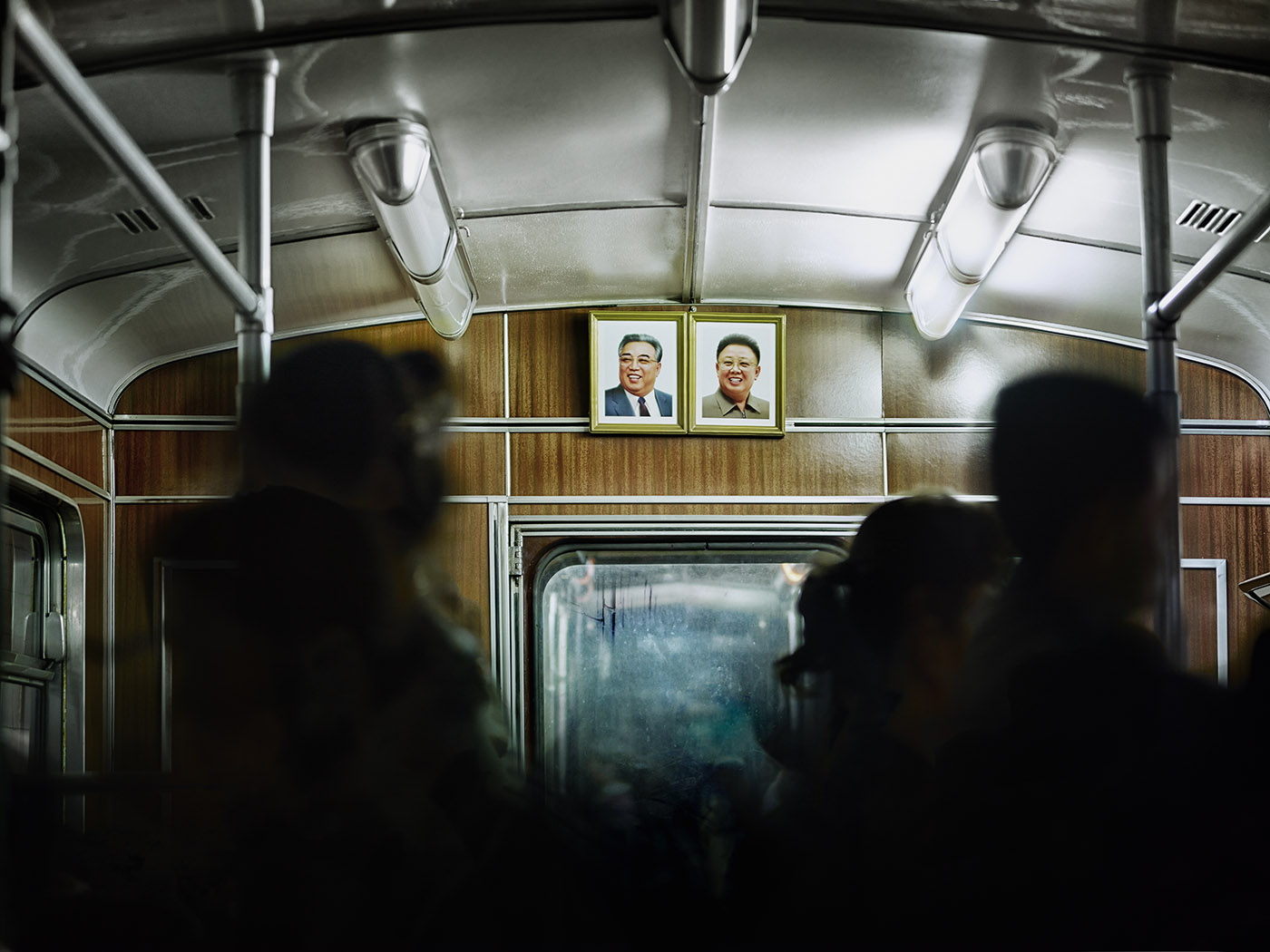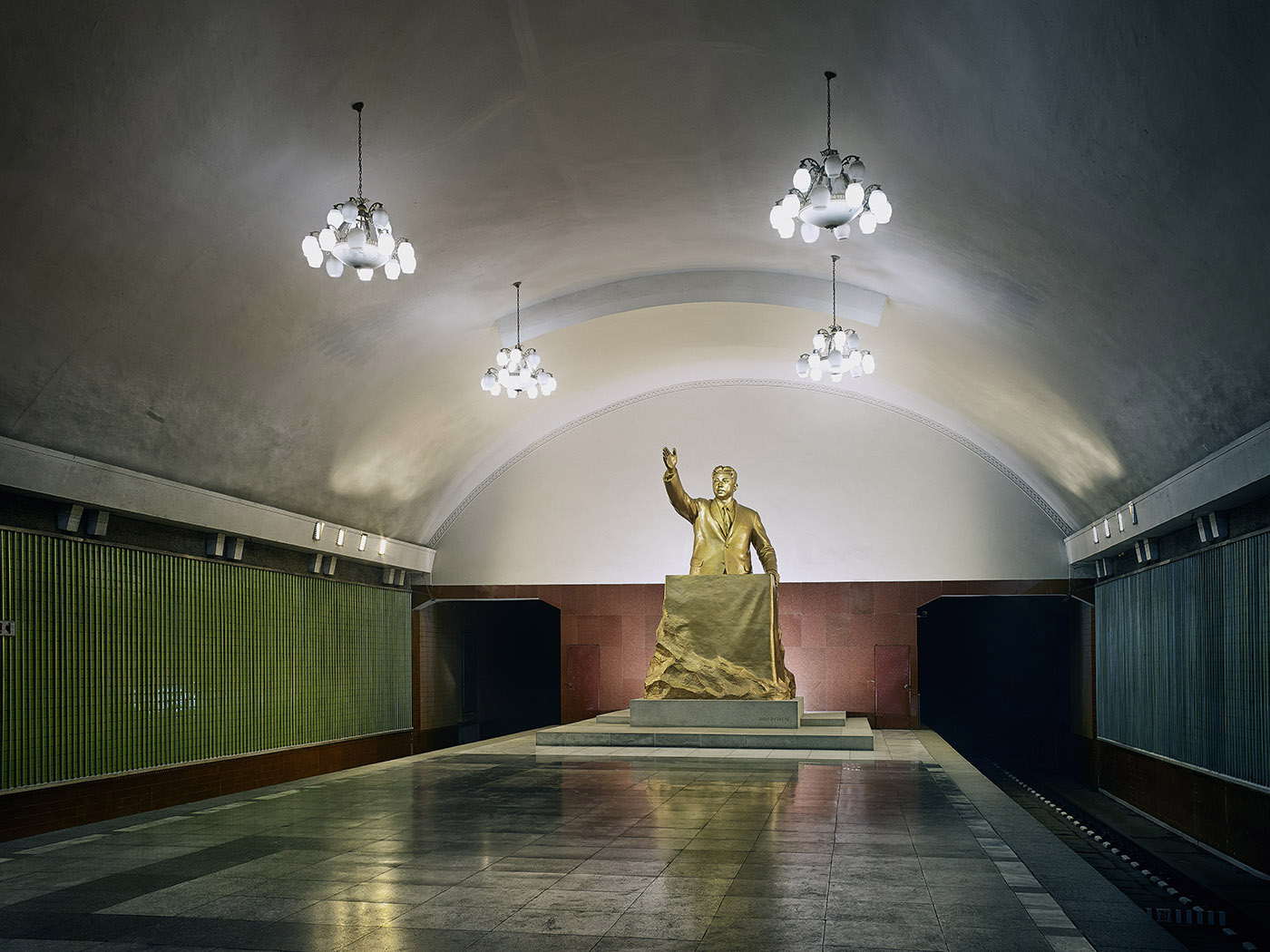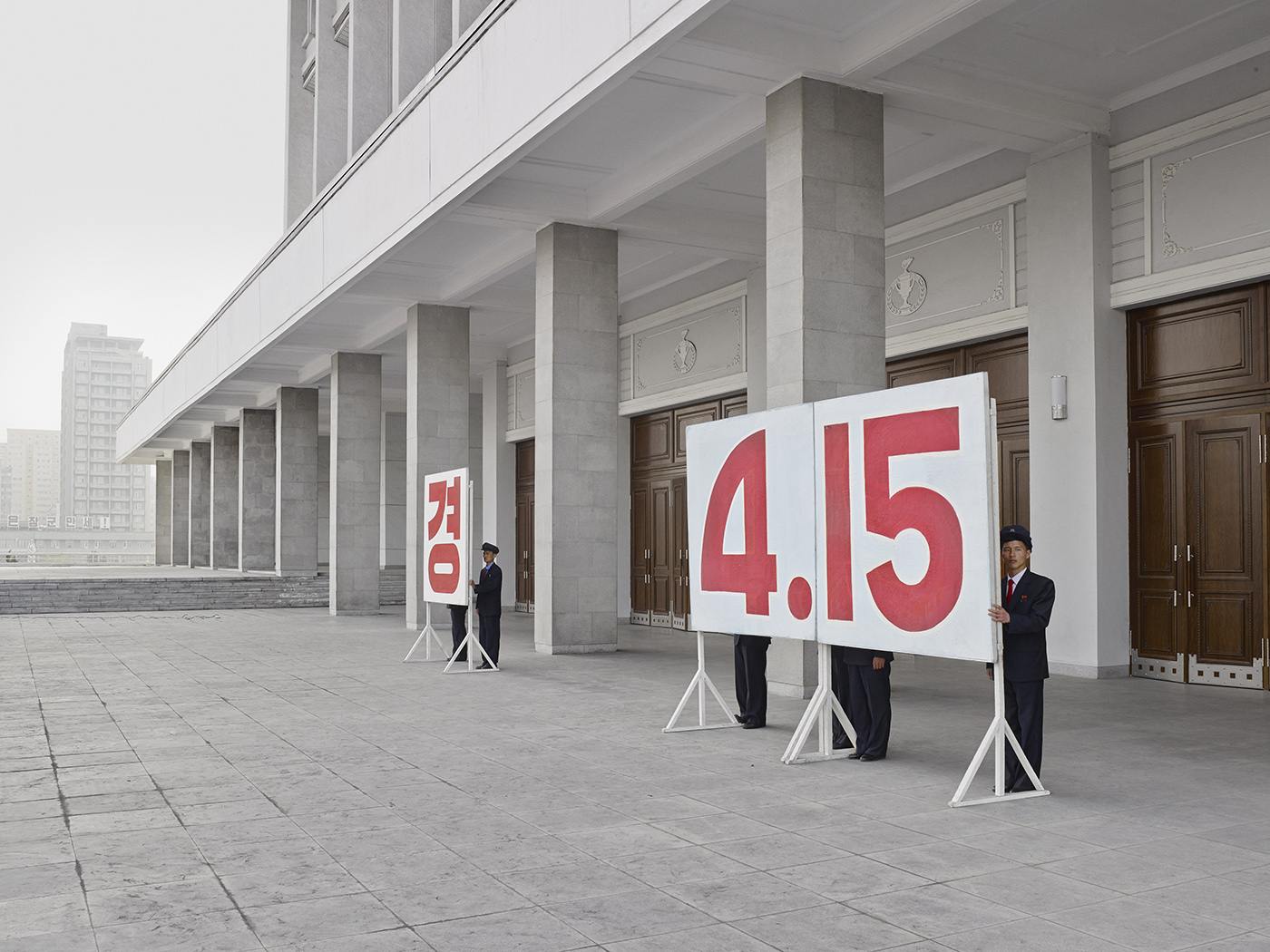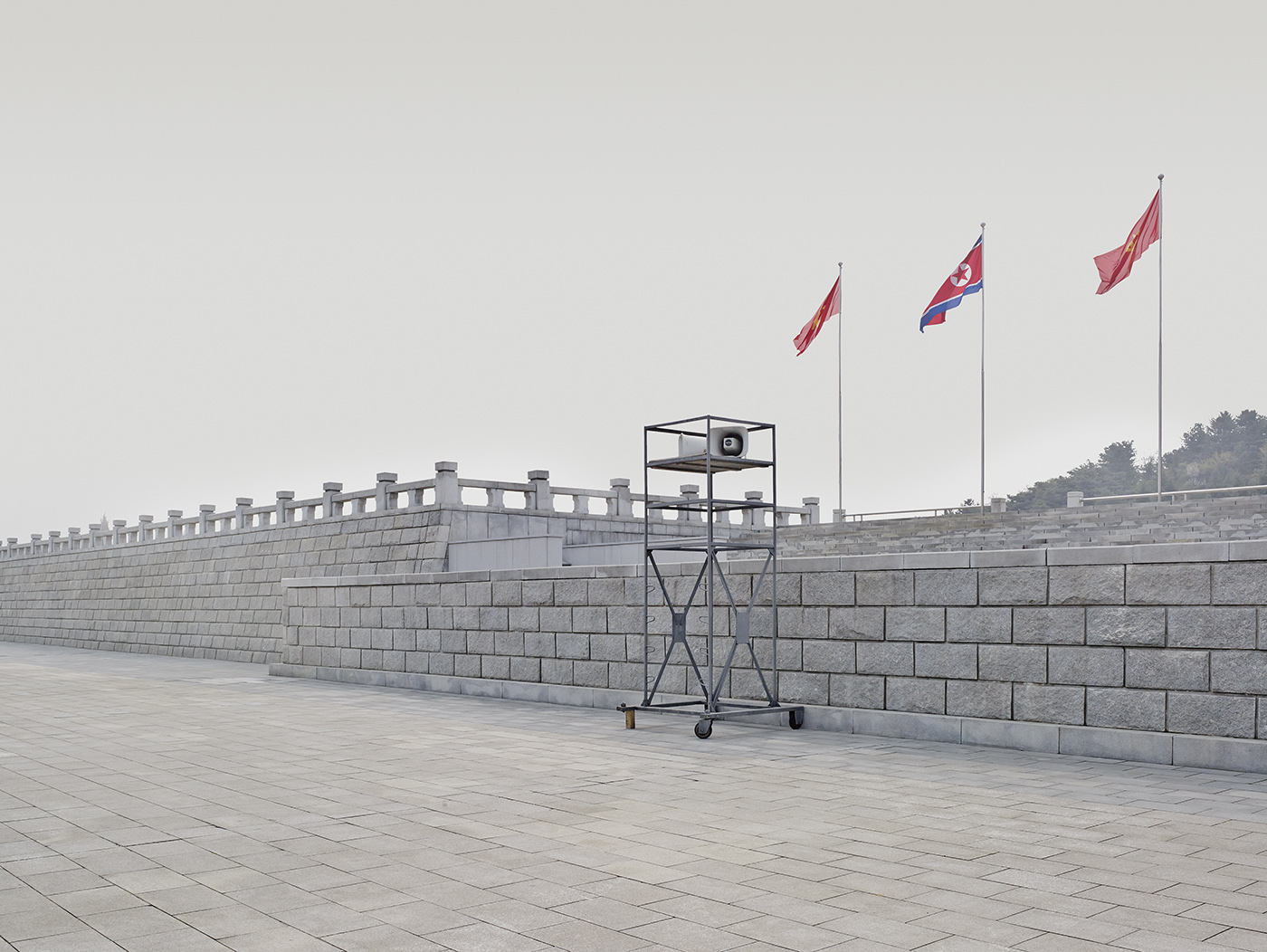
North Korea is a country that seems to terrify and fascinate in equal measure.
On the world stage, it is often associated with its current and former leaders Kim Jong Un and Kim Jong Il, who are branded tyrants but also noted for their ability to look at things and their stylish haircuts. Still others seem entranced by the socialist architecture of its capital, Pyongyang.
Almost completely destroyed during the Korean War, the city was rebuilt from scratch and today provides one of the most striking examples of an entirely socialist-designed metropolis. In the photographs that circulate in the West, we see the perfection of its supersize statues, the neatness of its city squares, and the soaring, still unfinished Ryugyong Hotel. All of which seem like monuments to a giant, nation-encompassing personality cult.
In April 2014, Dutch photographer Eddo Hartmann set out to conquer his own fascination with the Democratic People’s Republic of Korea, kick-starting the project Setting the Stage: Pyongyang, North Korea.
Hartmann planned his trip for many months and teamed up with the Koryo Studio video team — the art division of a Beijing-based travel company — in order to help him get access. When he was on the ground, he had two North Korean guides with him at all times. He was told to use a digital camera, so authorities might check his work, and was not permitted to take photographs of military personnel or unfinished buildings — standard practice for any visitor to the country. And so, while these images are the work of the photographer, they are certainly touched by the heavy hand of the North Korean state.
The resulting Pyongyang is expansive and largely empty. Its walls are clean, its subway platforms sparkle and in its lobbies, flowers bloom. This is art photography, though, not documentary photography. Unlike David Guttenfelder’s work, we aren’t getting snapshots of everyday life, but instead are being presented with a considered, slow-burning meditation — one fascinated with public space.
There is a theatricality in Hartmann’s stillness too: a woman appears to hide behind a foyer pillar, two speakers look poised to broadcast a state-approved announcement. And yet the photographer doesn’t seem to want us to slam what we are seeing, nor to praise it. Instead, he calls attention to the global fascination with a country, and a city, that remains largely a mystery.
Eddo Hartmann is a photographer based in the Netherlands. Setting the Stage: Pyongyang, North Korea runs through June 7, 2015, at the Huis Marseille in Amsterdam
Richard Conway is reporter/producer for TIME LightBox
Read next: See 100 Years of Korean Beauty Trends In Just 90 Seconds









More Must-Reads from TIME
- Cybersecurity Experts Are Sounding the Alarm on DOGE
- Meet the 2025 Women of the Year
- The Harsh Truth About Disability Inclusion
- Why Do More Young Adults Have Cancer?
- Colman Domingo Leads With Radical Love
- How to Get Better at Doing Things Alone
- Michelle Zauner Stares Down the Darkness
Contact us at letters@time.com